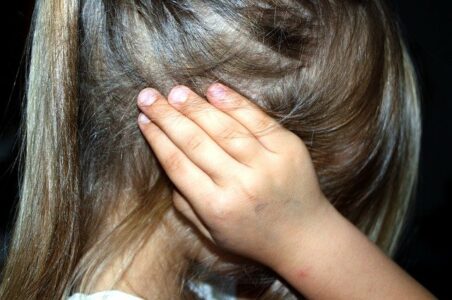he specific difficulties or disorders that may occur during children’s learning development are a set of problems that significantly interfere with a child’s academic performance, preventing proper development and diminishing the chances of achieving the goals set at different educational levels.
These disorders, which are much more common in boys than in girls, result from alterations in cognitive processes. For all these disorders, the deficit occurs at a very defined level. The most frequent disorders are signalled by problems in reading, writing or arithmetic.
Sometimes these difficulties go unnoticed for a certain period of time because, since they only concern learning, in the rest of the activities, the child maintains a level of competence equal to that of the rest of the class – and sometimes even higher than normal.
Causes and evolution of learning difficulties
We cannot speak of a single cause, but the following factors are generally at the root of the problem:
- Neurobiological factors. This is considered to be the main cause.
- Lack of learning opportunities
- Poor quality of teaching.
- Low cultural level of the entourage
- Insufficient parental involvement.
In terms of the evolution of the disorder, it should be noted that with appropriate psychoeducational intervention, improvements are noticeable in the majority of cases, without negative repercussions in adulthood. However, early treatment is fundamental to avoid:
- The demotivation of the student
- The development of an aversion to school
- Some inappropriate emotional problems
Most common problems: dyslexia, dyslalie, dysgraphia and dyscalculia.
We will briefly describe the four most common learning problems at the school level as well as the key points for their diagnosis in the school environment and their treatment.
Dyslexia
Dyslexia is a persistent and specific learning disability in reading and writing (lecto-writing), which appears in school children with no physical, psychological or socio-cultural problems. For this reason, its origin seems to lie in neuronal development.
According to the experts, dyslexia corresponds to a difficulty in decoding (or reading) words due to a certain type of affectation of the intermediate cognitive processes between the reception of information and the elaboration of meaning.
It is a very common difficulty and one of the main causes of academic performance problems in students. The main problem of dyslexia is its incompatibility with an educational system where the vast majority of content is taught through writing. Because of this, the dyslexic student has great difficulty keeping up with the rhythm of the class, gets tired and eventually loses concentration.
In terms of solutions, it should be pointed out that there are currently many specialized methods and materials to treat dyslexia: mental activity exercises, language exercises, lecto-writing, perceptual-motor exercises, etc. These activities are presented in the form of games and are very useful to push the child’s own abilities to the highest level of competence.
These methods must be adapted to the child’s age, type and severity of dyslexia; early diagnosis and treatment is the best guarantee for a quick and satisfactory resolution of the problem.
Dyslalia
Dyslalia is an alteration of phonemes that may affect only one or several of them. It is characterized by the absence or alteration of the phoneme(s) or their substitution by other sounds. When this problem appears after the age of 4 years (up to that age it is very common), it usually causes great anxiety in parents who mistakenly think that their child might suffer some type of delay. Normally, the dyslaly disappears after a while, but in the most serious or persistent cases, it may require the intervention of a speech therapist.
Dysgraphia
The term dysgraphia is very broad as it covers all learning difficulties related to writing. This group therefore includes very different problems, of various natures and with distinct symptoms.
Dysgraphia concerns boys and girls with a normal level of intelligence, even above average. There are many different types of dysgraphia: phonological, superficial, deep, peripheral, etc.. The school diagnosis occurs when the teacher observes significant alterations in the child’s dictation and copying and/or spontaneous writing.
As far as treatments are concerned, there is a wide range of activities that can be done in the classroom. Correction and careful follow-up are necessary on the part of the teacher.
Dyscalculia
It is a learning problem that affects a very specific area: arithmetic. It can concern basic concepts such as addition, subtraction, division or more abstract operations of algebra or geometry. When diagnosing, it is important to check for developmental problems in psychomotricity and intelligence.
Although they vary in degree, severity and areas of learning, the main learning difficulties have a series of features in common: they generally affect children without any intellectual or emotional delay who are in a completely normal schooling context. For this reason, the causes must be sought mainly in neurobiological factors. If these difficulties are detected early and treated at school level with exercises and methods of proven effectiveness, the improvement is noticeable for the vast majority of children.



